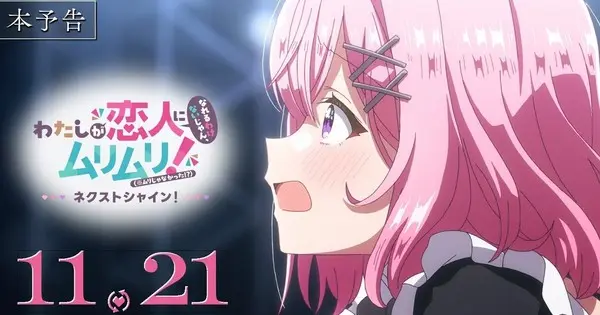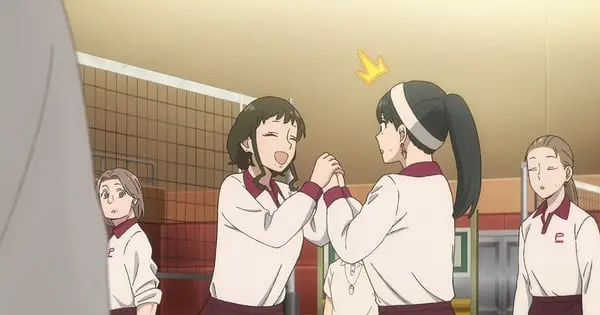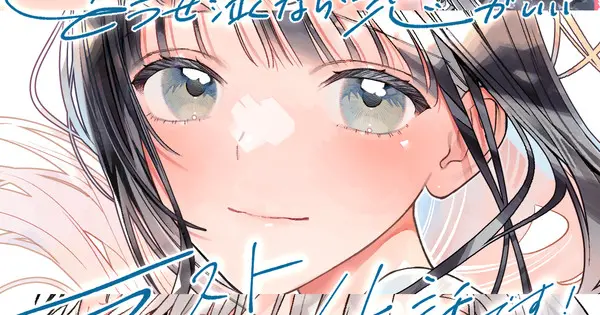The anime adaptation of Paru Itagaki’s critically acclaimed manga, SANDA, plunges viewers into a near-future Japan where the sanctity of childhood is both a national treasure and a tightly controlled commodity. Episode 5, which aired on November 1, 2025, in Japan, continues to unravel the intricate web of societal pressures, personal awakening, and the burden of destiny, delivering a pivotal installment that reshapes character dynamics and introduces significant new challenges for Kazushige Sanda and his allies.
This episode, directed by Tomohisa Shimoyama, proves to be a turning point, pushing its central characters into unfamiliar territory as they grapple with burgeoning emotions, inconvenient truths, and the oppressive forces of a society desperate to manage its declining birth rate. From the sudden appearance of Sanda’s government-assigned fiancée to the shocking return of a transformed Ichie Ono, Episode 5 is a maelstrom of plot developments that promise to define the series’ trajectory.
The Weight of Expectation: Sanda’s Predicament and Niko’s Arrival
One of the most impactful developments in SANDA Episode 5 is the formal introduction of Kazao Niko, Sanda’s government-assigned fiancée. In this dystopian future, where birth rates have plummeted, arranged marriages are commonplace, representing society’s desperate measures to control and increase its population. Niko’s arrival is not merely a personal entanglement for Sanda but a stark manifestation of the systemic control exerted over children and their agency. Her presence immediately highlights the overarching theme of adults manipulating and conditioning the youth to fit a “productive” mold, even to the extent of having “functional child brides and grooms.”
Niko herself is portrayed as a vibrant, almost chaotic personality, whose bold and liberated style stands in stark contrast to the managed environment she enters. Her disregard for social etiquette and her playfully confrontational interactions with Sanda immediately stir deeper feelings within the fourteen-year-old protagonist. This burgeoning attraction presents a critical problem for Sanda: his powers as Santa Claus are allegedly hampered, or even nullified, if he falls in love with a child. This vulnerability strips away the protective powers he typically possesses, creating an immediate and significant obstacle for future encounters and his mission. The episode explores whether this power loss is due to his feelings for Niko or simply the acknowledgment of his own childhood and desires.
The Return of Ichie Ono: Transformation and Turmoil
The mystery surrounding Ichie Ono, Shiori Fuyumura’s missing friend whom Sanda was tasked with finding, reaches a dramatic climax in Episode 5. Ono re-enters the narrative in a deeply troubling and unexpected manner. After experiencing what is described as an “overnight adult-like experience” sparked by a dream about Fuyumura, Ono undergoes a rapid puberty, transforming from a child into a young woman. This transformation is a direct consequence of a society that actively prevents children from sleeping, often through the use of drugs, to artificially extend their childhood. Ono’s sudden maturation, a forbidden experience in this controlled world, profoundly impacts her.
Her personality shifts dramatically from her previously gentle and playful demeanor to one marked by impulsivity and desperation. Flashbacks and current events depicted in the episode reveal the intense, potentially romantic feelings between Ono and Fuyumura. Terrified by her new adult state, Ono confronts Fuyumura with a knife, threatening to take both their lives so they can remain together and unchanged forever. This scene powerfully underscores the series’ exploration of identity, the pressures of adulthood, and the profound impact of societal manipulation on young lives.
Fuyumura’s Unraveling: Identity and Affection
Shiori Fuyumura, often presented as the most “mature” and adult-like member of the core trio, also experiences significant internal conflict in Episode 5. The episode delves into her deep uncertainties regarding her sexuality and sexual identity. Her physical appearance, particularly her height and thin frame, has instilled in her a profound sense of body dysmorphia. Her intense fondness for Ono is shown to stem from these insecurities, as being with the smaller Ono allowed those feelings to melt away.
Ono’s dramatic return and her desperate actions force Fuyumura to confront these complex emotions, pushing her into a vulnerable and emotionally charged state. The episode masterfully uses these personal struggles to deepen the characters, making them relatable despite the fantastical and dystopian elements of their world.
New Threats and Shifting Dynamics: Sabuto Yagiuda’s Covert Move
Further complicating matters is the unexpected arrival of Sabuto Yagiuda (also referred to as Saburo Yagiuda), a formidable Santa hunter from the Red-Clad Special Task Force, who infiltrates the school as a new instructor. Yagiuda’s presence poses a direct threat to Sanda, especially now that Sanda’s Santa powers are compromised due to his developing feelings.
This new dynamic creates an interesting predicament: Yagiuda is now undercover and lacks a definitive way to prove Sanda’s dual identity, while Sanda himself is struggling with his ability to transform. This development sets the stage for a tense cat-and-mouse game within the school, adding another layer of conflict to an already complex narrative.
The Typhoon as a Metaphor for Change
Adding to the episode’s dramatic flair, a wild typhoon serves as a backdrop for Sanda’s initial meeting with Niko. This literal storm mirrors the metaphorical storms raging within the characters and the turbulent societal landscape. It provides a chaotic setting that highlights Sanda’s internal conflict and the burgeoning, yet problematic, attraction he feels towards his fiancée. The typhoon becomes more than just weather; it symbolizes the disruptive forces challenging the established order and the characters’ carefully constructed realities.
Conclusion
SANDA Episode 5 is a powerful installment that significantly advances the plot and deepens the thematic exploration of the series. By introducing Kazao Niko, bringing back a transformed Ichie Ono, and placing Sabuto Yagiuda directly into Sanda’s environment, the episode escalates the personal and societal stakes. The characters are forced to confront uncomfortable truths about their identities, relationships, and the oppressive world they inhabit. As Sanda struggles with his diminishing powers and the complexities of his heart, Fuyumura grapples with her own desires, and Ono succumbs to the pressures of an unwanted maturation, SANDA continues to weave a compelling narrative about fighting for individuality and agency in a world that seeks to control every aspect of its youth.








